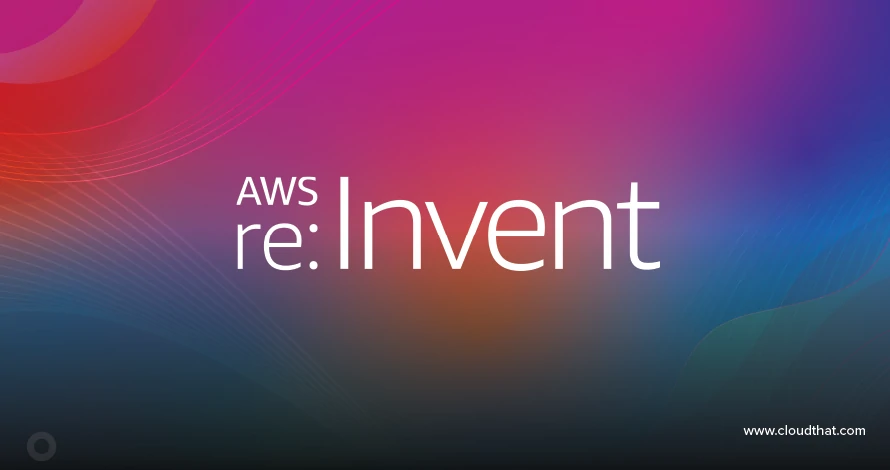|
Voiced by Amazon Polly |
Overview
In the constantly changing world of backend development, the performance of your application and the developer experience can be greatly impacted by the database management tools you use. The use of Prisma with PostgreSQL and the integration of Mongoose for MongoDB functions are examined in this blog.
Pioneers in Cloud Consulting & Migration Services
- Reduced infrastructural costs
- Accelerated application deployment
Understanding the Technologies
Prisma: The Next-Generation ORM
Prisma is a modern Object-Relational Mapping (ORM) tool that simplifies database operations with a type-safe API. It provides an intuitive way to define your database schema and interact with your database, offering features like:
- Auto-generated migrations
- Type-safe database queries
- Powerful query builder
- Support for multiple databases
PostgreSQL: The Robust Relational Database
PostgreSQL is a powerful, open-source relational database system known for its reliability, and performance. It excels at handling complex queries and relationships between data, making it ideal for structured data.
Mongoose: The MongoDB Object Modeling Tool
While primarily used with MongoDB, Mongoose provides schema validation, relationship management, and a simple query API. Some developers prefer its schema modeling capabilities even when working with relational databases.
Why Combine These Technologies?
You might wonder why you would use Prisma and Mongoose in a PostgreSQL project. Here are some compelling reasons:
- Transition Strategy: When migrating from MongoDB to PostgreSQL, keeping Mongoose temporarily can ease the transition.
- Best of Both Worlds: Leverage Prisma’s type safety with PostgreSQL while utilizing Mongoose’s schema validation.
- Polyglot Persistence: Some parts of your application might benefit from MongoDB’s document model, while others need PostgreSQL’s relational capabilities.
Setting Up Your Project
Initial Setup
|
1 2 3 4 5 |
mkdir prisma-postgres-mongoose-app cd prisma-postgres-mongoose-app npm init -y npm install prisma @prisma/client pg mongoose npx prisma init |
Configure Prisma with PostgreSQL
Modify your prisma/schema.prisma file:
|
1 2 3 4 5 6 7 8 9 10 11 12 13 14 15 16 17 18 19 20 21 22 23 24 25 26 27 28 |
generator client { provider = "prisma-client-js" } datasource db { provider = "postgresql" url = env("DATABASE_URL") } model User { id Int @id @default(autoincrement()) email String @unique name String? posts Post[] createdAt DateTime @default(now()) updatedAt DateTime @updatedAt } model Post { id Int @id @default(autoincrement()) title String content String? published Boolean @default(false) author User @relation(fields: [authorId], references: [id]) authorId Int createdAt DateTime @default(now()) updatedAt DateTime @updatedAt } |
Create a .env file in your project root:
|
1 2 |
DATABASE_URL="postgresql://username:password@localhost:5432/mydb?schema=public" MONGODB_URI="mongodb://localhost:27017/mydb" |
Setting Up Mongoose Schemas
Create a models directory and set up your Mongoose schemas:
|
1 2 3 4 5 6 7 8 9 10 11 12 13 14 15 |
// models/user.js const mongoose = require('mongoose'); const userSchema = new mongoose.Schema({ email: { type: String, required: true, unique: true }, name: String, externalId: Number, // To reference Prisma's User.id metadata: Object, // Additional data not in PostgreSQL }, { timestamps: true }); module.exports = mongoose.model('User', userSchema); |
Integration Strategy
Database Connection Setup
Create a database.js file for centralizing your database connections:
|
1 2 3 4 5 6 7 8 9 10 11 12 13 14 15 16 17 18 |
// database.js const { PrismaClient } = require('@prisma/client'); const mongoose = require('mongoose'); require('dotenv').config(); const prisma = new PrismaClient(); async function connectToMongoDB() { try { await mongoose.connect(process.env.MONGODB_URI); console.log('Connected to MongoDB'); } catch (error) { console.error('MongoDB connection error:', error); process.exit(1); } } module.exports = { prisma, connectToMongoDB }; |
Creating Services for Data Operations
Organize your business logic with service files:
|
1 2 3 4 5 6 7 8 9 10 11 12 13 14 15 16 17 18 19 20 21 22 23 24 25 26 27 28 29 30 31 32 33 34 35 36 37 38 39 40 41 42 43 44 45 46 |
// services/userService.js const { prisma } = require('../database'); const UserModel = require('../models/user'); async function createUser(userData) { // Create user in PostgreSQL using Prisma const prismaUser = await prisma.user.create({ data: { email: userData.email, name: userData.name || null } }); // Store additional data in MongoDB using Mongoose const mongoUser = await UserModel.create({ email: userData.email, name: userData.name, externalId: prismaUser.id, metadata: userData.metadata || {} }); return { ...prismaUser, metadata: mongoUser.metadata }; } async function getUserById(id) { // Get core user data from PostgreSQL const prismaUser = await prisma.user.findUnique({ where: { id: parseInt(id) }, include: { posts: true } }); if (!prismaUser) return null; // Get additional user data from MongoDB const mongoUser = await UserModel.findOne({ externalId: id }); return { ...prismaUser, metadata: mongoUser?.metadata || {} }; } module.exports = { createUser, getUserById }; |
Implementing Express API Routes
Set up a simple Express server to demonstrate the integration:
|
1 2 3 4 5 6 7 8 9 10 11 12 13 14 15 16 17 18 19 20 21 22 23 24 25 26 27 28 29 30 31 32 33 34 35 |
// app.js const express = require('express'); const { connectToMongoDB } = require('./database'); const userService = require('./services/userService'); const app = express(); app.use(express.json()); // Connect to MongoDB connectToMongoDB(); // Routes app.post('/users', async (req, res) => { try { const user = await userService.createUser(req.body); res.status(201).json(user); } catch (error) { res.status(500).json({ error: error.message }); } }); app.get('/users/:id', async (req, res) => { try { const user = await userService.getUserById(req.params.id); if (!user) return res.status(404).json({ error: 'User not found' }); res.json(user); } catch (error) { res.status(500).json({ error: error.message }); } }); const PORT = process.env.PORT || 3000; app.listen(PORT, () => { console.log(`Server running on port ${PORT}`); }); |
Best Practices and Considerations
Transaction Management
When modifying data in both PostgreSQL and MongoDB, consider handling failures:
|
1 2 3 4 5 6 7 8 9 10 11 12 13 14 15 16 17 18 19 20 21 22 23 24 25 26 27 28 29 30 31 32 33 34 35 36 |
async function updateUserWithTransaction(id, updateData) { try { // Start a Prisma transaction return await prisma.$transaction(async (tx) => { // Update PostgreSQL data const updatedPrismaUser = await tx.user.update({ where: { id: parseInt(id) }, data: { name: updateData.name, email: updateData.email } }); // Update MongoDB data const updatedMongoUser = await UserModel.findOneAndUpdate( { externalId: id }, { metadata: updateData.metadata }, { new: true } ); if (!updatedMongoUser) { // If MongoDB update fails, you might want to throw an error // to trigger a transaction rollback in Prisma throw new Error('MongoDB update failed'); } return { ...updatedPrismaUser, metadata: updatedMongoUser.metadata }; }); } catch (error) { console.error('Transaction failed:', error); throw error; } } |
Performance Optimization
To optimize performance in this hybrid setup:
- Reduce Cross-Database Queries: Minimize operations that require data from both databases.
- Caching: Implement Redis or in-memory caching for frequently accessed data.
- Data Duplication Strategy: Decide which data needs to be in both systems and which can be exclusive to one.
Conclusion
Remember that this hybrid approach works best as a transitional strategy or when you genuinely need relational and document database features. For most applications, fully committing to Prisma with PostgreSQL or Mongoose with MongoDB will provide a simpler architecture with fewer potential issues.
Following the principles outlined in this guide, you can successfully integrate these powerful technologies while maintaining a clean, maintainable codebase.
Drop a query if you have any questions regarding Prisma or PostgreSQL and we will get back to you quickly.
Making IT Networks Enterprise-ready – Cloud Management Services
- Accelerated cloud migration
- End-to-end view of the cloud environment
About CloudThat
CloudThat is an award-winning company and the first in India to offer cloud training and consulting services worldwide. As a Microsoft Solutions Partner, AWS Advanced Tier Training Partner, and Google Cloud Platform Partner, CloudThat has empowered over 850,000 professionals through 600+ cloud certifications winning global recognition for its training excellence including 20 MCT Trainers in Microsoft’s Global Top 100 and an impressive 12 awards in the last 8 years. CloudThat specializes in Cloud Migration, Data Platforms, DevOps, IoT, and cutting-edge technologies like Gen AI & AI/ML. It has delivered over 500 consulting projects for 250+ organizations in 30+ countries as it continues to empower professionals and enterprises to thrive in the digital-first world.
FAQs
1. Why use both Prisma/PostgreSQL and Mongoose together?
ANS: – This combination helps during MongoDB to PostgreSQL migrations, supports polyglot persistence needs, and lets you leverage the strengths of both systems simultaneously.
2. How do I maintain data consistency across both databases?
ANS: – Use transaction-like patterns and consistent ID references between systems and implement regular data reconciliation processes.

WRITTEN BY Rishav Mehta
Rishav is a skilled Frontend Developer with a passion for crafting visually appealing and intuitive websites. Proficient in HTML, CSS, JavaScript, and frameworks such as ReactJS, he combines technical expertise with a strong understanding of web development principles to deliver responsive, user-friendly designs. Dedicated to continuous learning, Rishav stays updated on the latest industry trends and enjoys experimenting with emerging technologies in his free time.


 Login
Login


 April 22, 2025
April 22, 2025 PREV
PREV










Comments